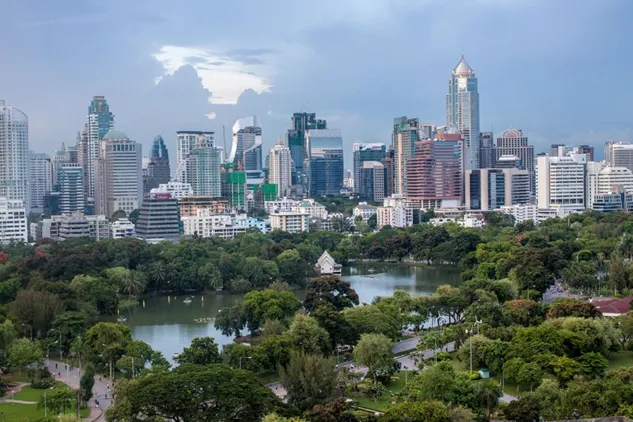WHO Launches Global Guide for Strategic Urban Health Action

On World Cities Day, the World Health Organization (WHO) urges national and city leaders to transform urban areas into hubs of health, equity, and sustainability.
Currently, over 4.4 billion people, which accounts for more than half of the global population, reside in urban environments. This figure is expected to climb to nearly 70% by 2050. In urban settings, health, inequality, the environment, and the economy intersect in significant and impactful ways, leading to complex challenges and unique opportunities for progress. While health issues are widespread in all urban scenarios, the most severe health consequences are often observed in slums and informal settlements, where residents endure unsafe housing, inadequate sanitation, food insecurity, and heightened vulnerability to floods and heat waves. Currently, 1.1 billion people live in such conditions, a number projected to triple by 2050.
With the launch of the new guide for decision-makers today, titled "Taking a Strategic Approach to Urban Health," the WHO presents tangible suggestions to initiate a new phase of urban health action. This guide responds to the growing necessity for integrated solutions that address health challenges and broadly promote well-being in urban settings. It is the first comprehensive framework of its kind intended to assist governments in strategically planning for urban health by incorporating evidence into policy and practice.
“This is a crucial moment for decision-makers at every level to collaborate,” stated Jeremy Farrar, Assistant Director General for Health Promotion, Disease Prevention and Care at WHO. “The guide offers national and municipal leaders, planners, partners, and communities a structure to work together across sectors and scales to foster fairer, healthier, and more resilient futures.”
Health risks and disparities exist across all urban areas: a study examining 363 cities in nine Latin American countries discovered life expectancy gaps of up to 14 years for men and 8 years for women between the healthiest and least healthy cities. Urban residents around the globe confront a multitude of overlapping risks – from air pollution and unsafe transportation to inadequate housing, noise pollution, and climate-related dangers. Air pollution alone results in approximately 7 million deaths annually, and nearly every urban resident breathes air that fails to meet WHO air quality guidelines. High population density amplifies the risks of infectious disease outbreaks, such as COVID-19 and dengue, while lack of access to green spaces increases the risk of noncommunicable diseases.
Urban environments have become the primary influence on human health in our daily lives while also contributing to global issues such as climate change, resource scarcity, and rising inequality. This reality positions cities as frontlines for current health challenges and offers the greatest potential for transformative change.
Taking strategic actions towards urban health can promote equity and create resilient, attractive urban spaces that support economic development, environmental sustainability, and enhanced quality of life. Communities and businesses are increasingly inclined to seek environments that ensure safety, livability, and opportunities.
In multiple locales including the Dandora neighborhood of Nairobi, Kenya; Suva, Fiji; Makassar, Indonesia; and Coimbra, Portugal, decision-makers are incorporating community perspectives directly into urban design for health.
"Cities are essential for advancing public health," remarked Dr. Etienne Krug, Director of Health Determinants, Prevention and Promotion. "This Guide provides governments with a roadmap to act strategically, establishing operational links with other significant global policy matters like climate change, transportation, digital transformation, and migration."
The Guide emphasizes that health is not solely the responsibility of one sector, nor can it be confined to decisions made by city officials. From ensuring clean air and safe housing to supporting active transportation and digital access—as well as broader financing and regulatory actions—the everyday choices made by urban authorities across various sectors and levels affect the health of billions. Implementing strategic action requires aligning these choices to foster healthier and more equitable futures where urban systems work collaboratively to promote equity, sustainability, and resilience.
"Taking a Strategic Approach to Urban Health" outlines actionable steps for governments to follow:
The WHO urges municipal and national leaders to adopt a more strategic approach to urban health, recognizing the critical role that local and national governments play in developing integrated health actions that synchronize with broader societal goals, thereby enhancing the livability, equity, and sustainability of urban areas.
In conjunction with the Guide, the WHO is launching the initial three modules of an Urban Health E-learning course, hosted by the WHO Academy, aimed at bolstering capacities for collaborative initiatives in urban contexts.
Developed with contributions from a diverse array of global experts, "Taking a Strategic Approach to Urban Health: A Guide for Decision Makers" builds on decades of WHO’s work in urban health. It illustrates that a strategic approach to health can result in healthier and more resilient communities.
© 2025 Health Tribe.


